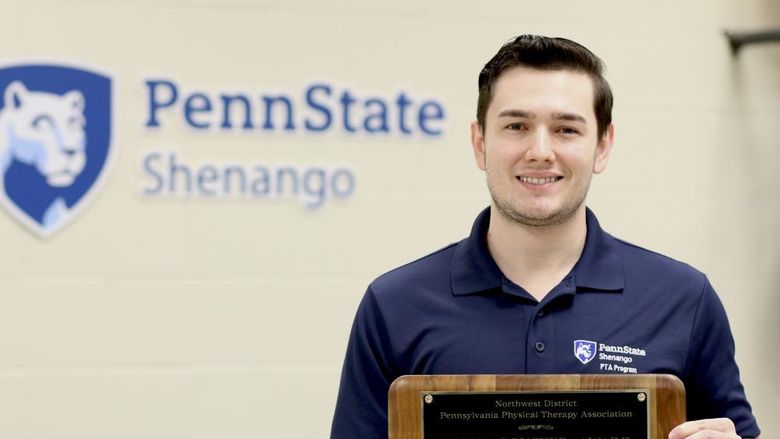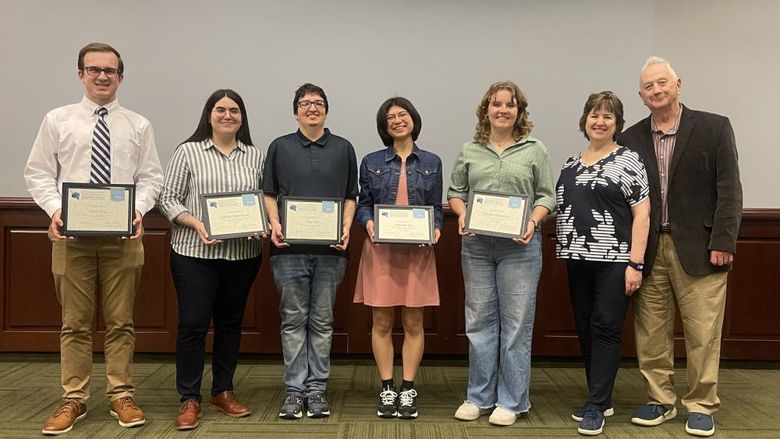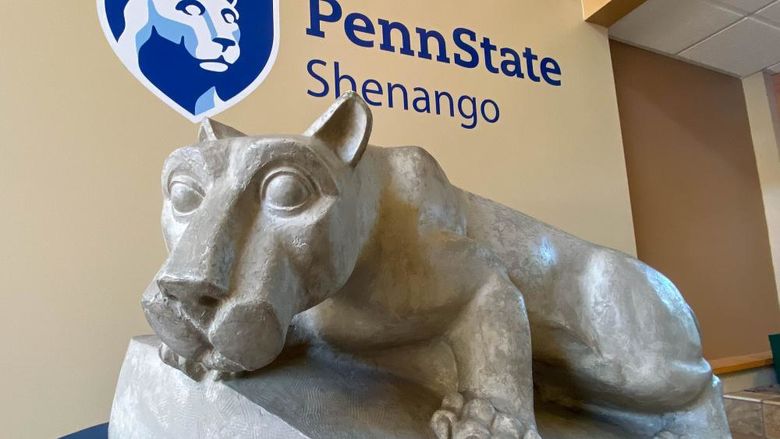OTA student Sara Wasacz works on another student during a lab
Sara Wasacz was stressed.
Her husband was preparing for the first of two brain surgeries that would help to eliminate his epileptic seizures. Her 4-year-old son needed to be carted from preschool to babysitter, home and back again. She was working 30 hours a week at Sam’s Club. And her final exams were fast approaching.
A longtime co-worker recognized Wasacz’s anxiety and approached her with a smile and a gift – a sticker bearing the familiar red and yellow logo of Wasacz’s favorite superhero.
“Let your inner Wonder Woman shine,” the co-worker told her.
The act of kindness didn’t solve all of Wasacz’s problems, but it did remind her that while her schedule was insane – “I was living out of my car,” she laments – she did have a lot going for her, including a deep tuition discount courtesy of Penn State Shenango.
“Without it, I couldn’t afford to go to school,” Wasacz said.
Wasacz is a resident of Mahoning County, which sits on the Ohio-Pennsylvania line. Because of the proximity to Shenango, residents of Mahoning and Trumbell counties are eligible to receive in-state tuition at the campus. While the program has been in place for decades, until recently, it hasn’t been widely advertised.
Wasacz began attending Shenango two years ago, after an unproductive five-year stint at an Ohio school.
“They were not pushing me through,” Wasacz said. “The last class I took there was an art history class I didn’t need. I just took it to stay active.”
The unremitting holding pattern she’d found herself in was quickly lifted when she enrolled at Shenango, in the campus’ occupational therapy assistant program. She got the classes she needed when she needed them. And she was buoyed by the support of her advisers and professors.
“They really want to help you,” she said. “They want to see you succeed.”
That kind of encouragement extended to Wasacz’s fellow OTA classmates. The 21 students in her cohort – several of whom are also from Mahoning or Trumball counties and enrolled through the in-state tuition program – have taken to gathering for study sessions while on campus and calling or texting each other with questions while off campus: How many flashcards do you have? Have you finished your reading?
The atmosphere has made Wasacz’s 45-minute trek to campus and late-night study sessions worth the effort.
“It’s 100 percent worth it,” she said. “I know this is what I need to be doing.”
Actually, Wasacz had an inkling that occupational therapy was her calling back in high school. She announced it to her family one afternoon in her grandmother’s kitchen. They shrugged it off as one in a long line of teenaged phases. Seventeen years later, Wasacz is doing exactly what she told them she was going to do.
And she loves it.
“I like to think I’m creative, that I’m a problem solver,” Wasacz said.
And that’s just what occupational therapy is all about – finding ways to adapt a patient’s environment or modify a patient’s task so that they can perform, or resume performing, daily activities. Wasacz is hoping to work with children, so she’ll have the added challenge of keeping them engrossed in the tasks she assigns. She’s not too concerned. After all, this is a woman who has talked her toddler into gathering his paper and crayons and “studying” alongside her in the evenings.
Soon, those study sessions will be over. Wasacz is scheduled to graduate in December 2017.
“I can’t wait,” she said.





